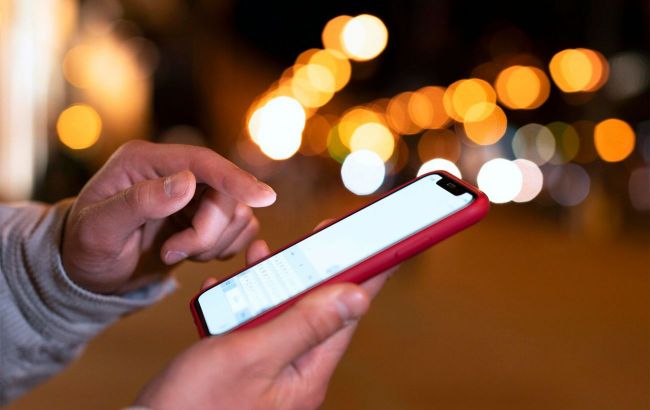Keep your privacy. How to stop Apple from collecting your personal data
 How to minimize Apple's surveillance of your data (illustrative photo: Freepik)
How to minimize Apple's surveillance of your data (illustrative photo: Freepik)
In today's world, technology knows more about us than we do. Your every search query, photo in the cloud, or command to the voice assistant is information that Apple can use, states the world's leading technology and life advice website Lifehacker.
Limit Siri's data collection
The recent Siri eavesdropping lawsuit suggests that you should pay attention to the data the voice assistant collects. To set this up, go to Settings, Apple Intelligence, and Siri and explore the available options.
If you don't want to use Siri at all, go to "Enter and talk to Siri" and select "Turn off", then turn off "Press side button for Siri". On compatible iPhones, also turn off "Input for Siri." After you turn off all the possible switches, iOS will ask if you really want to turn off Siri - confirm by tapping "Turn off Siri".
Next, go back to the previous page, select "Siri History & Dictation" and click "Delete Siri History & Dictation" to clear all Siri request records from Apple's servers. However, to completely delete all related data from Apple's servers, you must also turn off Dictation. You'll find this option in the General, Keyboards section.
You can also turn off some features in the Suggestions section to reduce the number of Siri suggestions you hear when you use your iPhone.

Limit Siri's data collection (photo: Lifehacker)
Turn off Apple Intelligence
Few AI features work entirely offline. Even Apple Intelligence transmits a significant amount of data to Apple's servers.
Although Apple uses data encryption, the feature still depends on sending information to the servers to work properly. If you want to avoid this, go to Settings, Apple Intelligence, and Siri and turn off the toggle next to Apple Intelligence.
Turn off the collection of search queries
Apple collects the search queries you type in Safari, Siri, and Spotlight Search to improve search results. Although Apple claims that this information is not tied to your account, it's still an additional type of data collection. You can turn it off by going to Settings, Search, and disabling the "Help Apple improve search" option.

Disable the collection of search query data (photo: Lifehacker)
Check Apple's access to your location
Some Apple services, such as Find My Phone, require access to your location to work properly. Without it, Apple won't be able to find your lost or stolen device, and maps won't work. However, in many other cases, Apple doesn't need access to your location at all.
To check and turn off Apple's location access, go to Settings, Privacy & Security, Geolocation Services. Scroll through the list of apps and turn off location access for any Apple apps that don't need it.
Apple explains why each app needs access to your location. For example, the Workout app on Apple Watch needs it to track your jogging routes. However, apps like the App Store can do without this access.
Next, scroll to the end of the list and go to the System Services section. Here you can view all geolocation settings and disable unnecessary ones. However, be careful: it's easy to disable something important. However, it is safe to disable location access for features like Web Browsing in apps.
It is recommended that you turn on the status bar icon if it is not already activated. This way you will see every time any application on your iPhone accesses your location.
You can also open the Significant Places section and tap Clear History to delete all saved locations that apps use to provide geo-location-based services.
However, this information is encrypted with end-to-end encryption and is not accessible to Apple. At the same time, this data can be useful: for example, the Photos app can create a slideshow of photos taken at your home or in your favorite outdoor recreation spot.
Turn off Enhanced Visual Search
Enhanced Visual Search lets Apple match locations in your photos to a global index. This allows you to search for landmarks or points of interest in the Photos app to find relevant photos.
If you don't want to use this feature, you can disable it. To do so, go to Settings, Apps, Photos, and turn off Advanced Visual Search.
Turn off Apple analytics
Apple collects data to improve its products. These settings are not activated by default, but it's worth checking them out and deciding if you want to share your data with the company.
To turn off analytics, on your iPhone, go to Settings, Privacy & Security, Geolocation Services, System Services, and scroll to the bottom of the list. Turn off iPhone Analytics, Routes and Traffic, and Map Enhancement.
After that, go to Settings, Privacy & Security, Analytics & Improvements. All of the settings in this section are designed to collect data to help Apple improve its services. If you don't feel comfortable sharing this data, feel free to turn them all off.

Disable Apple analytics (photo: Lifehacker)
Reduce the number of personalized ads
Although Apple actively promotes privacy, its platforms contain a lot of ads. You can't block Apple ads completely, but you can reduce the number and personalization of ads.
To reduce the use of your data to personalize ads, go to Settings, Privacy & Security, Apple Ads, and turn off personalized ads.
Strengthen your iCloud security
Apple has made significant improvements to iCloud security in recent years, but as it stands, the service still gives companies too much potential access to your data.
By default, iCloud protects 15 types of data using end-to-end encryption (E2EE), including iCloud messages, health data, and passwords. However, many other data types, such as Notes, Photos, and iPhone backups, are not protected.
What's more, if you use iCloud to back up your iPhone, your messages lose their end-to-end encryption protection. The data is still encrypted, but the keys to decrypt it are stored by Apple. It's convenient if you lose access to your account, but it's not the best option in terms of privacy and security.
The easiest way to encrypt almost all of your iCloud data with E2EE is to turn on Advanced Data Protection. This feature protects almost all of your iCloud information, including messages, notes, contacts, and the backups themselves, with end-to-end encryption.
This solves the problem of privacy and security because Apple will no longer have access to your data. However, there is a downside: if you lose access to your account or recovery key, Apple won't be able to help you. So if you decide to enable this feature, be extremely careful.
There are a few types of data that remain unencrypted, even with Advanced Data Protection enabled: iCloud Mail, Contacts, and Calendar. If you want to completely prevent Apple from accessing this data, you'll need to disable synchronization of these services.
To check what data is stored in iCloud, open Settings, [Your Name], iCloud, and click the View All button next to Saved to iCloud. Here you can see a list of your synced data and turn off iCloud for services you don't need.
Also, read about three hidden Apple Watch features that make using your iPhone easier.

